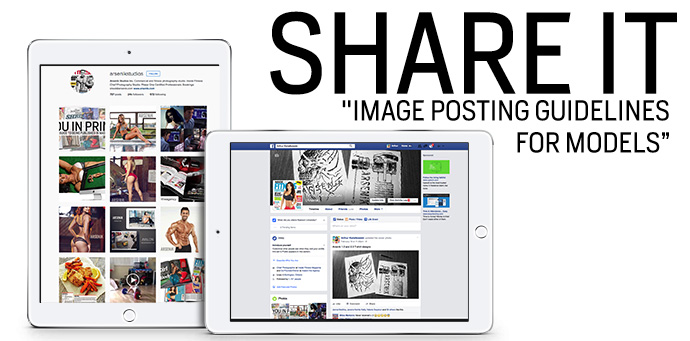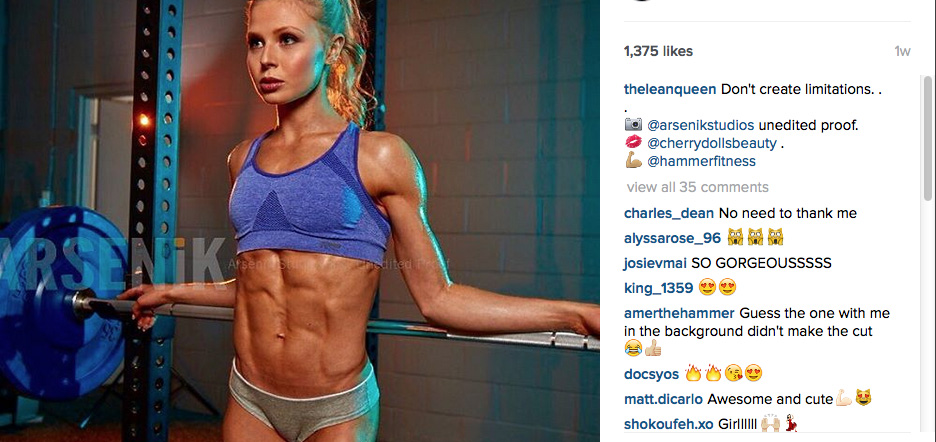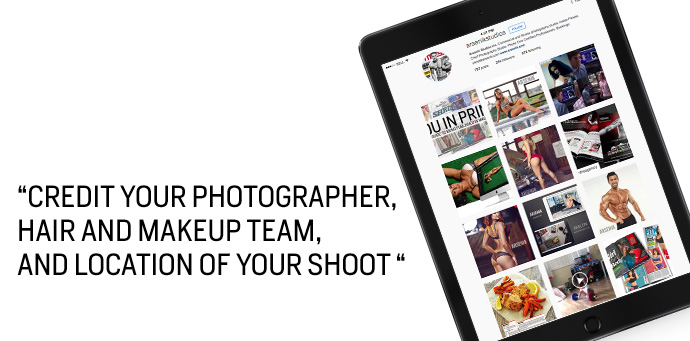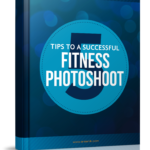
One of the questions that we often get asked about is image licensing and online-posting practices. Since the questions are usually very similar in nature these few pointers and tips should be a helpful guideline to those who are unsure what is acceptable and what is frowned upon.
It depends on the photographer, but in most cases you will walk away with your images on a USB/CD right after the shoot or they will be sent to you via a digital transfer (website/dropbox/etc.). Those images are proofs from your photoshoot and in most cases they will have some kind of watermark through the images indicating that fact.
Phtoshoot proof images
Why the watermark? The watermark is there for several reasons. One of the main reasons is copyright infringement to protect you and the photographer. In the past I’ve seen models post almost an entire shoot online. Since the images didn’t have a watermark they are open for anyone to “use”. When a third party takes those shots and uses them in a blog or article, they aren’t doing it legally; they are infringing on the copyright. I’ve even seen big brands “grab” such images and post them on their business pages with a slogan and/or other promo material. Imagine you are a sponsored athlete with a supplement company, and you post a bunch of unedited/un-watermarked shots from your shoot online. Another supplement company goes in and takes those images for their use with their brand. Now, it looks bad on you, as it seems you are cross-promoting two competing brands. Will the watermark stop everyone? No, but it will be a deterrent since the person will have to go out of the way to remove it. In most cases they will do another search and grab someone else’s image that isn’t watermarked.
The second part to the proof-watermark is brand integrity for the photographer. Various photographers have different standards on quality; our studio is definitely one that takes quality of images very seriously. When you receive our final images they are edited to the highest standards. The difference between an unedited shot and an edited one can sometimes be very minor to the viewer, but to us sometimes those details are very noticeable. You must also remember that most of the images you are viewing are online, are seen in fairly low resolution. The last thing a photographer would want is a proof image being mistaken for an edited shot and used in an editorial feature in print where the quality requirements are much different. The unedited watermark allows us to control those mistakes from happening.

Now that the basic purpose of the proof-watermark was defined you might ask yourself what are the guidelines for posting proof images. From a photographer’s standpoint we prefer edited shots to be posted to depict the work. However, I completely understand that after a great shoot you don’t want to wait until you get your edits, and you want to share with everyone how great the shots turned out. That’s perfectly fine and is a very normal practice. If you chose to do so make sure to state “unedited image by” in your post as well. Where some models stretch this rule is after they receive their edits they continue posting unedited proof images. If you really like the image I suggest contacting the photographer and asking for a web/online edit or a high resolution edit. Most photographers these days have highly discounted web resolution edit packages that are much cheaper than getting the full high res edits. (only get that if the end purpose is online/web usage. If you want to submit to publications the high-resolution edit is still the way to go and worth the investment)
Posting your edited images
So now you have chosen your edits (high res or online version) and you are ready to post on your social media. Most photographers should be giving you two versions of the images you select. The high-resolution image and the web version that has a watermark. In this instance the watermark should be placed in a manner that does not take away from the image. It shouldn’t be your generic proof watermark that runs through the center of the image, it should be placed off to the side and not be a negative distraction to the actual shot. The purpose of this watermark is just as described above, a deterrent from others using the image for any advertising/marketing type of material without your and the photographer’s consent. The worst thing you can do is upload your high resolution images online. I highly advise you never to post your edited high-resolution images online. This opens the door to other companies taking the image and using it not only online but in print form as well.
Credits
It’s always a professional courtesy to credit your photographer, hair and makeup team, and even the location during your posts. If you have sponsors that provided you with clothing for the shoot make sure to include them also. Keep the credits short and sweet, no one wants to have to read to an entire acceptance speech.

Sharing your images with third-parties
I’m not going to go into the legal details of image licensing as there are a lot of variables to take into consideration and some laws vary from country to country. The rule of thumb is, that the images that you received from your personal photoshoot are for your personal and editorial usage. This means that you can share the images, use them to promote yourself as an athlete or a service you provide such as personal training. You are able to submit to magazine publications, which will most likely contact the photographer for an image release if the images are to be used in a publication. Depending on the publication they might have a per image structure set up that will be paid directly to the photographer for editorial image.
The images however are NOT licensed for third party commercial usage. This means that you can’t give the images to your supplement sponsor to use in an ad promoting a product or service. Whenever companies use images for ads and their marketing content they either need to hire the photographer to capture the images or purchase a commercial license for an already produced image. In recent years, there has been a negative trend with companies utilizing fitness models to book shoots and therefore obtain free images. The photographer isn’t the only one that is at a loss in this scenario. Think of it this way… if you as a model/athlete continue to give companies your images for free then you should never expect them to arrange a photoshoot for you either. Why would a company pay for a shoot when they know you will float the expense and give them the images for free. This also applies to photographers i who don’t uphold proper business practices and are willing to trade in their work for a credit on the advertisement. As a general rule, let companies set up and pay for their own photoshoots Photoshoots you arrange and pay for are to promote yourself, get your foot in the door with potential business opportunities, and to get yourself published.
The reason I chose to call this article guidelines not rules is because there will be cases where sometimes the above points are not valid. However, in general the points listed above should give you an idea as to the proper etiquette when posting and the reasons why certain things are done the way they are.



